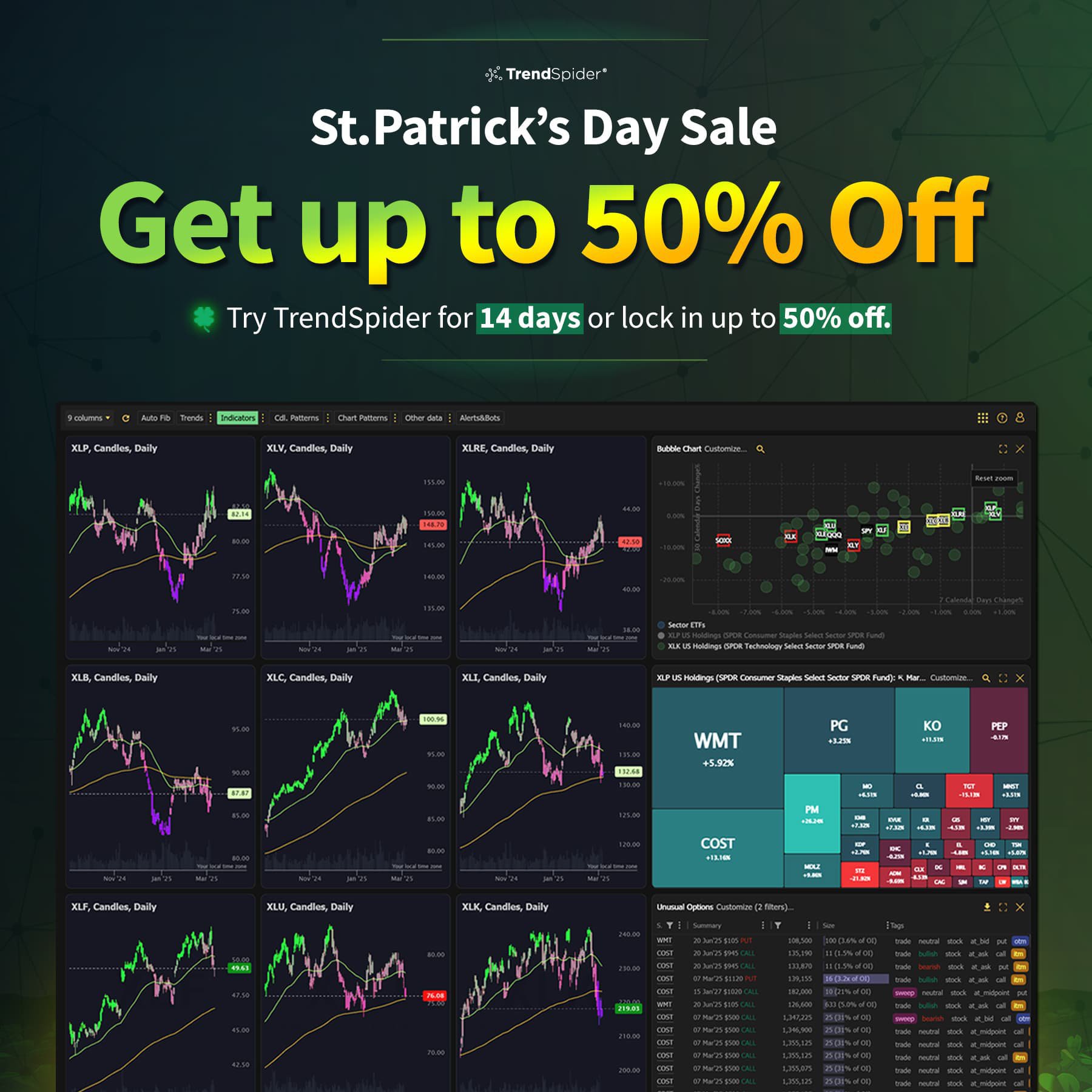How to Seamlessly Combine MotiveWave With Other Analysis Techniques

In today's competitive trading landscape, many traders are actively seeking ways to combine motivewave with other analysis techniques to enhance their decision-making process. By leveraging the robust analytical capabilities of MotiveWave alongside complementary strategies, traders can uncover deeper insights, pinpoint actionable patterns, and ultimately gain a competitive edge. This comprehensive guide delves into the process of integrating MotiveWave with various analytical frameworks, offering detailed explanations, real-world case studies, actionable solutions, and expert tips for successful implementation.
Introduction
Over the past decade, traders and investors have evolved from basic chart reading to employing sophisticated tools and dynamic strategies. MotiveWave, recognized for its extended capabilities in technical analysis, provides a robust foundation for savvy traders looking to combine motivewave with other analysis techniques. This article examines the theoretical underpinnings, practical applications, and strategic recommendations designed to create a seamless integration between MotiveWave and other vital analysis tools in trading.
The increasing complexity of financial markets demands a holistic approach where technical, fundamental, and sentiment analysis tools meld to form a powerful synthesis of information. Whether you are trading equities, forex, or cryptocurrencies, pairing MotiveWave’s technical strengths with complementary methodologies can lead to improved market predictions and optimized execution. Through this guide, we will explore how you can elevate your trading strategy by combining motivewave with other analysis techniques.
Understanding MotiveWave
MotiveWave is a comprehensive technical analysis platform that provides users with an array of tools designed to facilitate in-depth market analysis. It stands out due to its sophisticated charting capabilities, integrated Elliott Wave analysis, and extensive array of technical indicators. Below, we dissect the core features and historical significance of MotiveWave in the modern trading environment.
Key Features and Capabilities
MotiveWave offers a host of unique features that make it a favorite among technical traders:
Advanced Charting Tools: MotiveWave provides numerous chart types, drawing tools, and studies that assist traders in visualizing market trends.
Elliott Wave Analysis: This feature enables traders to interpret market cycles and forecast potential market movements.
Integrated Indicators: An expansive library of technical indicators, alerts, and trading systems helps execute a diverse range of strategies.
Flexible Customization: The platform allows users to tailor indicators, scripts, and strategies to meet their individual trading preferences.
Robust Backtesting: Traders can simulate past market conditions, evaluating the performance of varied strategies using historical data.
The Role of MotiveWave in Modern Trading
MotiveWave’s importance lies in its flexibility and depth. It empowers traders to transform raw data into strategic insights by deep-diving into chart patterns and technical indicators that many mainstream platforms overlook. While some traders rely solely on fundamental analysis or market sentiment, integrating such insights with MotiveWave’s technical details can result in a more rounded perspective.
MotiveWave’s integration of Elliott Wave theory is particularly noteworthy. The platform doesn't just present data—it assists traders in deciphering the underlying market psychology behind price movements. For traders who appreciate a detailed, systematic approach, such features can provide a compelling edge.
Evolving with the Market
Markets evolve, and so too must trading platforms. MotiveWave continues to innovate by incorporating new trends in data analytics, algorithmic trading, and automated strategy testing. In an ever-changing financial landscape, the platform’s continuous development ensures traders have access to up-to-date tools necessary to navigate uncertainty and volatility.

Overview of Other Analysis Techniques
A successful trading strategy often involves more than just one type of analysis. To truly optimize market strategies, traders integrate various methods, including technical, fundamental, quantitative, and sentiment analysis. Below, we examine each of these methodologies and how they complement the powerful features of MotiveWave.
Technical Analysis from Multiple Perspectives
Technical analysis remains at the core of many trading strategies. However, a multi-dimensional approach is often more effective than relying on a single technical indicator. Here are a few well-known technical tools:
- Moving Averages: Used to identify trends, these indicators filter out the noise from random price fluctuations.
- Relative Strength Index (RSI): Measures momentum and helps determine overbought or oversold conditions.
- MACD (Moving Average Convergence Divergence): Offers insights into trend reversals by comparing moving averages.
- Bollinger Bands: These provide visual cues for volatility and potential reversals.
The integration of these tools with MotiveWave can yield sophisticated signals that enhance trading precision.
Fundamental Analysis: Understanding Market Drivers
While technical analysis focuses on historical price patterns, fundamental analysis dives deep into the underlying value of assets. By examining financial statements, market conditions, and macroeconomic factors, fundamental analysis allows traders to evaluate whether an asset is undervalued or overvalued.
Merging this analytical approach with MotiveWave allows a dual perspective: using technical indicators to time entry and exit points and fundamental data to validate the overall confidence in a trade. For example, a trader might use MotiveWave to monitor momentum and chart patterns while assessing earnings reports or economic indicators to gauge the long-term viability of a stock.
Quantitative and Algorithmic Analysis
Modern trading increasingly relies on quantitative methods which employ mathematical models and algorithms. Quantitative analysis involves statistical studies, predictive modelling, and real-time data processing. Tools such as machine learning algorithms, regression analysis, and pattern recognition systems play a significant role in professional trading strategies.
By combining motivewave with other analysis techniques, traders can implement algorithmically driven strategies that automatically adjust to market changes. Platforms supporting such integration allow strategies to be rigorously tested using backtesting capabilities ensuring that theoretical models hold up under real market conditions.
Sentiment Analysis: Gauging Market Emotion
Sentiment analysis involves the study of market psychology to predict future movements. In the digital age, sentiment can be gauged through social media trends, news analysis, and quantifying investor sentiment. Although inherently more descriptive and less numerical, sentiment analysis brings a human element into the picture, revealing market moods that might signal upcoming shifts in price behavior.
Integrating sentiment analysis with advanced technical platforms like MotiveWave provides a timer’s nuance. For instance, when technical indicators indicate a potential reversal, sentiment data can confirm whether the market mood aligns with the predicted movement.
Combining Data for a Holistic Strategy
The ultimate goal is to create a strategy that leverages strengths from all these approaches. By synthesizing technical, fundamental, quantitative, and sentiment analysis, traders can form a comprehensive view of the market. This holistic approach equips traders with confidence and clarity, enabling more informed decision-making.
Real-world data integration—such as using economic calendars, earning reports, and news feeds—enables traders to adjust their tactics dynamically.

How to Seamlessly Combine MotiveWave With Other Analysis Techniques
Integrating different analysis techniques with MotiveWave involves both strategic planning and meticulous execution. In this section, we will outline actionable steps and a systematic approach to merging these methods effectively.
Step 1: Define Your Trading Objectives
Before integrating multiple analysis techniques, it is imperative to clarify your trading goals. Ask yourself:
- What assets am I trading?
- Is my focus short-term or long-term?
- What is my risk tolerance?
- How much weight should each analytical method carry in my strategy?
Clearly defined objectives help in selecting the right combination of approaches. For instance, if you are a day trader, technical and sentiment analysis could provide quick entry and exit signals. On the other hand, a swing trader might rely more heavily on fundamental analysis supported by technical confirmations.
Step 2: Understand the Core Strengths of Each Technique
Each analysis method has intrinsic strengths:
- Technical analysis excels in identifying immediate price trends and patterns.
- Fundamental analysis provides insights into the inherent value and potential of an asset.
- Quantitative strategies offer predictive power through the use of models and algorithms.
- Sentiment analysis paints a picture of market psychology.
In combining motivewave with other analysis techniques, it is critical to respect and understand these differences. Merging them should involve a careful balancing act to ensure that no single method overwhelms the others.
Creating a Unified Analytical Framework
Developing a unified framework means establishing a common ground where data and signals from different analyses can be harmonized. Some tips include:
- Use technical indicators from MotiveWave as a basis for point-of-entry and stop-loss determination.
- Validate these signals using fundamental data and market news, often available from external sources.
- Incorporate quantitative models to predict probabilities and optimize trade sizes.
- Cross-check signals with sentiment analysis to mitigate overconfidence and herd mentality risks.
A unified framework allows for a layered decision-making process where each analysis method acts as a safety net or secondary confirmation.
Step 3: Utilize MotiveWave’s Advanced Features
MotiveWave comes equipped with a host of advanced features that can facilitate the integration process:
- Custom Indicators: Program custom indicators that can interface with external data feeds.
- Automation Tools: Use MotiveWave’s automation features to execute trades when signals from combined techniques align.
- Backtesting Modules: Leverage historical data to test your multi-analysis strategy. Simulate various market conditions to assess performance and refine parameters.
- Alerts and Notifications: Set customizable alerts that trigger when specific conditions from your combined techniques are met.
By harnessing these features, traders can streamline their workflow and ensure that all signals are processed in real time, improving overall decision-making speed and accuracy.
Step 4: Conduct Rigorous Backtesting
One of the most crucial steps in combining motivewave with other analysis techniques is to validate your integrated strategy through extensive backtesting. Backtesting involves:
- Simulating historical market conditions.
- Evaluating the synergy of technical, fundamental, quantitative, and sentiment indicators.
- Adjusting strategy parameters based on performance metrics.
For instance, a trader might test how effective the combination is during high-volatility periods versus stable market conditions. Using MotiveWave’s built-in backtesting functionality, along with external data sources, you can analyze numerous “what if” scenarios.
Step 5: Implement and Monitor
Once the integrated strategy has been tested and refined, implement it in a live market setting. Key recommendations include:
- Start with a demo or paper trading account to monitor performance without risking capital.
- Gradually transition to live trading, continuously monitoring performance.
- Regularly review and adjust parameters based on evolving market conditions.
- Remain vigilant for anomalies or unexpected market behaviors that might require reevaluation of the strategy framework.
Effective monitoring is essential. Utilize dashboards and real-time analytics available within MotiveWave to track performance and gather insights. Over time, even small adjustments can lead to significant improvements in overall strategy robustness.

Step 6: Integrate Real-Time Data Feeds and External Tools
For a truly seamless integration of multiple analysis methods:
- Incorporate API connections to financial news, economic reports, and market sentiment trackers.
- Use dedicated software or plugins that synchronize external data feed with MotiveWave’s interface.
- Ensure that your trading system is flexible enough to incorporate new signals or data points as they become available.
This real-time integration is particularly useful for traders who rely on high-frequency trading signals or algorithms that process large volumes of data.
Overcoming Potential Pitfalls
Integrating multiple analysis methods is not without its challenges. Some common pitfalls include:
Data Overload: The sheer volume of signals might make it difficult to filter out noise. Develop strict criteria so that only the most robust signals prompt action.
Conflicting Signals: It is possible for technical analysis to indicate one outcome while fundamental factors suggest another. In these scenarios, always prioritize risk management and consider scaling down your position.
Overfitting: Optimizing your strategy for past data might lead to suboptimal performance in future scenarios. Maintain flexibility and be prepared to adapt quickly as market conditions shift.
Technical Integration Issues: Ensure that your technical setup, including API connections and data synchronization, is robust and reliable to avoid breakdowns during trading sessions.
By staying aware of these challenges and refining your approach accordingly, you can mitigate risks and maximize the potential benefits of an integrated analysis system.
Real-World Case Studies
Case Study 1: Day Trading with Integrated Analysis
Consider a day trader who utilizes MotiveWave for tracking minute-by-minute price movements combined with sentiment analysis from social media platforms. The trader might:
- Rely on MotiveWave’s technical indicators to identify precise entry and exit points.
- Validate these with sentiment scores derived from trending market news and social media sentiment analysis tools.
- Use algorithmic filters to shut out market noise during highly volatile sessions.
In one scenario, the trader successfully navigated a sudden market dip triggered by unexpectedly negative news while technical indicators indicated a brief rebound. The fusion of technical, sentiment, and quantitative analysis allowed the trader to exit at just the right moment, minimizing losses and locking in profits.
Case Study 2: Swing Trading with Fundamental Support
A swing trader might take a longer-term view by combining technical analysis available through MotiveWave with rigorous fundamental analysis. In such a case, the trader:
- Uses MotiveWave to identify bullish chart patterns and momentum shifts.
- Cross-references these patterns with quarterly earnings reports and macroeconomic indicators.
- Employs a quantitative model to establish optimal position sizes and price targets.
This integrated approach not only bolstered the trader's confidence in each position but also provided a safety net should market fundamentals point towards a reversal. The result was a robust trading system that could adapt to both short-term market fluctuations and long-term industry trends.
Best Practices for Integration
To maximize the benefits of combining motivewave with other analysis techniques, consider these best practices:
Start Small and Scale Gradually: Test the integrated approach on a small number of trades before committing significant capital.
Maintain Clear Documentation: Document each element of the combined strategy for ongoing evaluation and improvement.
Remain Disciplined: Avoid emotional decision-making by sticking to predefined rules set forth by your integrated strategy.
Continuously Educate Yourself: The financial markets are ever-evolving; staying updated with new analytical methods and platform updates will help you maintain an edge.
Foster Flexibility: Be prepared to modify your strategy as market dynamics change. A rigid strategy may fail under unexpected conditions.
Future Trends in Integrated Analysis
Looking forward, technological advancements are poised to make the integration of diverse analytical techniques even more seamless. The development of artificial intelligence (AI) and machine learning models will likely play a pivotal role in data analysis and signal validation. As traders continue to refine their strategies, platforms like MotiveWave will integrate more sophisticated tools to automate and enhance this synthesis.
Emerging trends to watch include:
- AI-driven predictive models that can analyze real-time market sentiment and fundamental data.
- Enhanced visualization tools that consolidate multiple data streams into intuitive dashboards.
- Greater interoperability between various analytical platforms through standardized APIs.
As these trends continue to evolve, the future of integrated trading analysis looks promising. Traders who are proactive in incorporating these advancements will likely enjoy a significant competitive advantage in an increasingly data-driven trading environment.
Final Thoughts
Successfully merging motifWave’s advanced technical features with complementary analytical techniques involves a thoughtful, systematic approach. By clearly defining your trading objectives, understanding the strengths of each analysis method, rigorously testing your integrated strategy, and adapting as needed, you can create a powerful trading system that leverages a broad spectrum of data and insights.
In today's fast-paced markets, the capacity to combine motivewave with other analysis techniques offers not only increased accuracy but also the potential to significantly improve your profitability and risk management. As you implement the strategies discussed in this guide, remain committed to continuous learning and refinement—two critical components of long-term trading success.
This comprehensive framework is designed to empower traders at every level, from beginners to seasoned professionals. Whether leveraging backtesting modules or integrating live fundamental data feeds, the synergy of diversified analytical approaches provides a pathway to more informed and confident trading decisions.
By following these detailed guidelines and embracing a holistic approach, you can harness the comprehensive strengths of technical, fundamental, quantitative, and sentiment analysis. In doing so, you'll position yourself to navigate the intricacies of financial markets with precision, resilience, and a well-grounded strategy for success.
As financial markets continue to grow and evolve, traders must adapt to obtain deeper insights and identify nuanced trends beyond solitary analysis methods. The integration of diverse analytical strategies using platforms like MotiveWave is not simply an optional enhancement—it is becoming a necessity for those looking to thrive in modern trading. Embrace the integration process, utilize every tool at your disposal, and transform your trading strategy into an agile, robust system ready to face the challenges of tomorrow's markets.
With thoughtful implementation and ongoing refinement, the fusion of MotiveWave’s robust charting capabilities with complementary analysis techniques can be a game changer, offering you unprecedented clarity, reduced risk, and a definitive edge. Let this guide be your roadmap towards building a sophisticated, multi-dimensional trading strategy that grows with you and adapts as market dynamics shift.
Happy trading and may your integrated strategies lead you to greater success!
Unmatched Trading Power with Binance
Are you ready to take your trading game to new heights? Binance offers a cutting-edge platform for seamless cryptocurrency transactions.
With lightning-fast execution, top-tier security, and a vast selection of coins, you'll have all the tools you need to maximize your profits. Join now and experience the future of trading.
Keval Desai
61 posts written





